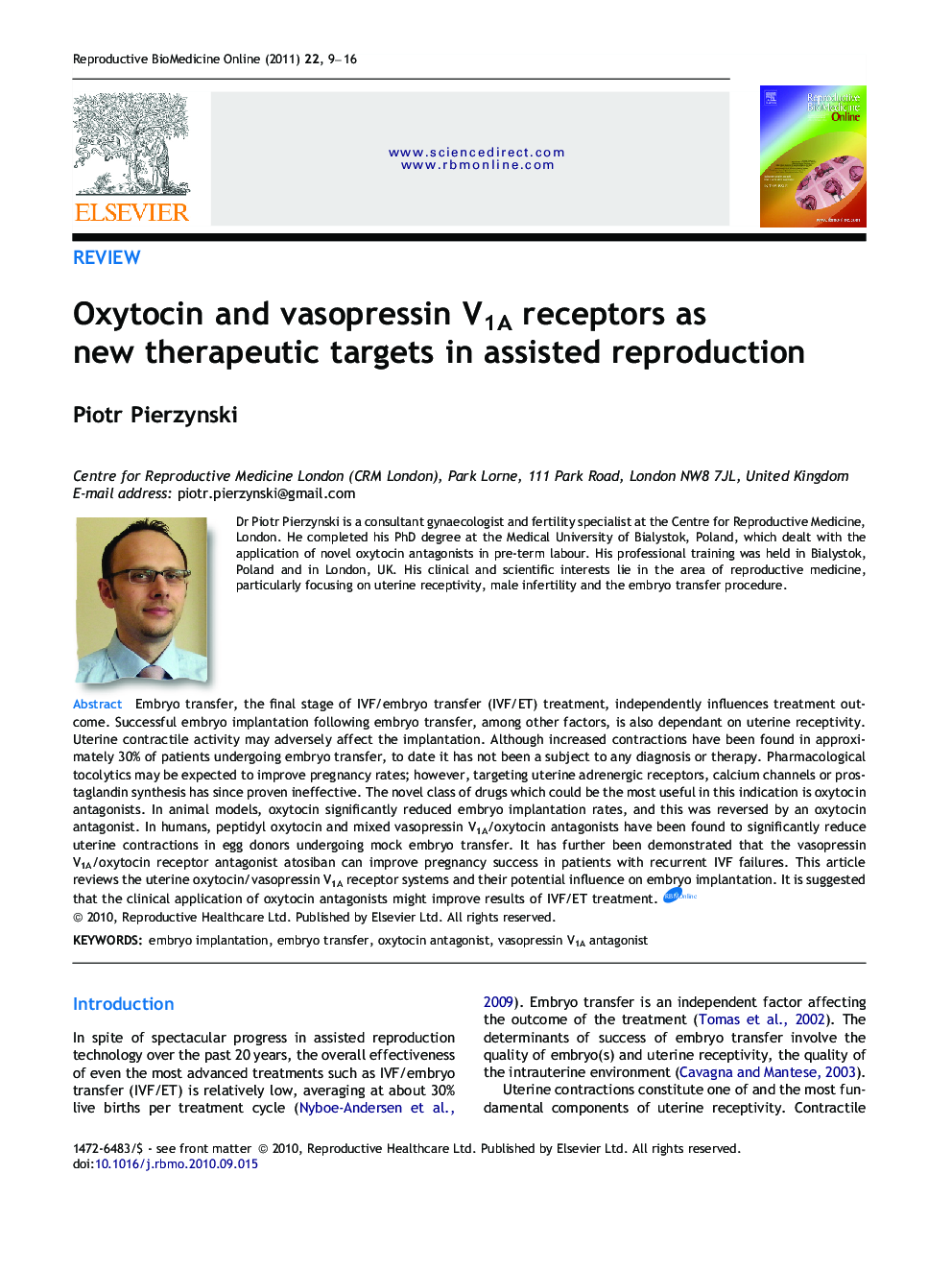| Article ID | Journal | Published Year | Pages | File Type |
|---|---|---|---|---|
| 3971804 | Reproductive BioMedicine Online | 2011 | 8 Pages |
Embryo transfer, the final stage of IVF/embryo transfer (IVF/ET) treatment, independently influences treatment outcome. Successful embryo implantation following embryo transfer, among other factors, is also dependant on uterine receptivity. Uterine contractile activity may adversely affect the implantation. Although increased contractions have been found in approximately 30% of patients undergoing embryo transfer, to date it has not been a subject to any diagnosis or therapy. Pharmacological tocolytics may be expected to improve pregnancy rates; however, targeting uterine adrenergic receptors, calcium channels or prostaglandin synthesis has since proven ineffective. The novel class of drugs which could be the most useful in this indication is oxytocin antagonists. In animal models, oxytocin significantly reduced embryo implantation rates, and this was reversed by an oxytocin antagonist. In humans, peptidyl oxytocin and mixed vasopressin V1A/oxytocin antagonists have been found to significantly reduce uterine contractions in egg donors undergoing mock embryo transfer. It has further been demonstrated that the vasopressin V1A/oxytocin receptor antagonist atosiban can improve pregnancy success in patients with recurrent IVF failures. This article reviews the uterine oxytocin/vasopressin V1A receptor systems and their potential influence on embryo implantation. It is suggested that the clinical application of oxytocin antagonists might improve results of IVF/ET treatment.Embryo transfer, the procedure of placing embryos in the womb (uterus) is the final step of IVF/embryo transfer (IVF/ET). Subsequent embryo implantation is, among other factors, dependent on the condition of the uterus. Increased uterine contractions at embryo transfer might be capable of expelling embryos from the uterus. Although contractions are found in about 30% of patients undergoing embryo transfer, this aspect has not been subject to any specific diagnosis or therapy. To date, attempts with medications such as ritodrine, nifedipine or indomethacine have not shown any significant increases in pregnancy rates. Oxytocin antagonists, representing a new class of drugs being used to stop uterine contractions in premature labour, could be potentially useful in this indication. They were found to be more specific and safer than any other formulations decreasing uterine contractions. In animal studies, it was confirmed that oxytocin antagonist called atosiban improved embryo implantations. In humans, it was successfully used in patients with repeated IVF/ET treatment failures. With more upcoming research and clinical trials, safety and effectiveness of embryo transfer support by oxytocin antagonists could be verified. If confirmed to be of benefit, it could be introduced as an adjunct to regular IVF/ET treatment.
